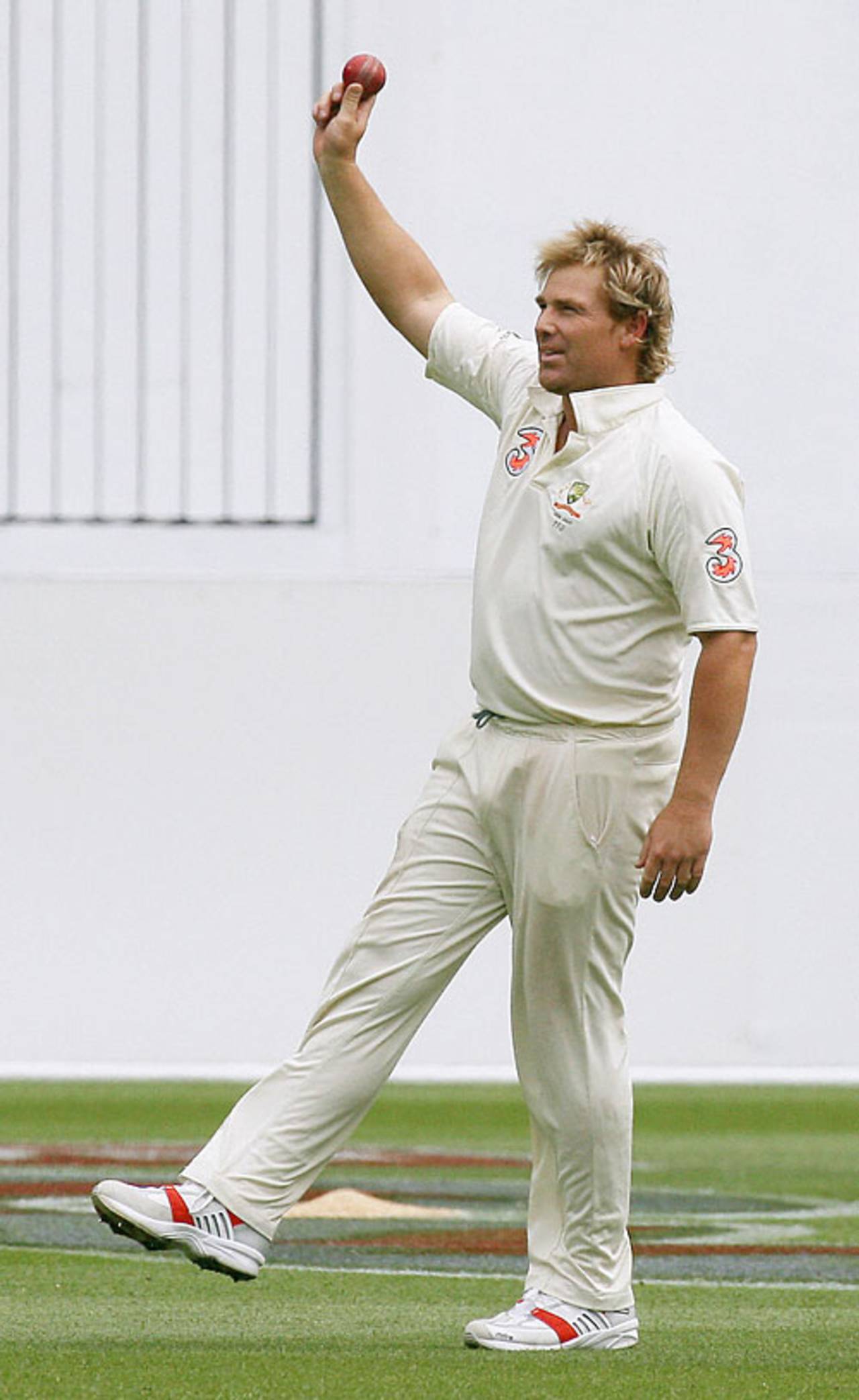Everest and K2
I was at the Melbourne Test just over 30 years ago when Lance Gibbs broke Fred Trueman's record of 307
Gideon Haigh
25-Feb-2013

Getty Images
Before the day's play, there was a certain amount of press-box debate not merely about Shane Warne's chance of a 700th wicket, but of his chance of a 706th. Warne took six wickets in last year's Super Test. What might happen were that pretty daft and pointless game to have its Test status revoked? It can happen. After all, Wisden gave Alan Jones a Test cap for playing against the Rest of the World in 1970 only to confiscate it later.
Some press box talking points last longer than others: this one seems to have been more or less disposed of by today's events. Unless, of course, it's decided that the entitlement to top level status of Tests against Bangladesh and Zimbabwe should be reviewed. In which case Warne would have rather less to lose than Muttiah Muralitharan: 17 wickets versus 137. But however you count it, 700 is a stupendous quantity of Test wickets. I was at the Melbourne Test just over 30 years ago when Lance Gibbs broke Fred Trueman's record of 307. It seemed like the scaling of Everest. Now we have a new Everest, and Murali's K2.
Both Warne and Murali, of course, are slow bowlers: hard yakka at the best of times. 'Bowling spin can be a lonely business,' Warne observes in his new book. 'A lot of the time you are the only spinner in the team.' That being so, however, where a seam bowler on an overcast day or faced with a lush wicket might have to split the overs three ways, a spinner usually faces little competition for overs when conditions are favourable. So while we'll probably continue fetishising the new ball, it's likely that our major long-distance wicket takers will be those who use the old.
Some commenters objected to this blog's criticisms of Rudi Koertzen during the Perth Test. Mind you, when you've been branded an English sycophant and an Australian jingoist, you tend to take comments with a grain of salt; nor did Koertzen do much today to quiet my mind. By my reckoning, he rejected five good lbw shouts: Collingwood when he was 0 and 6, to Clark; Panesar when he was 4, to Warne; Hayden when he was 6 and 9, to Hoggard. Worse, he was not consistent. Having added a foot to the height of the stumps in Perth, he seemed here to have shrunk them by a foot. To say that 'umpires are only human' is a fatuity: so are cricketers, and they are understood to pass in and out of form, and be subject to promotion and demotion. Koertzen is, to me, out of form as an umpire.
Let us, though, be constructive. How do umpires practice? How do umpires find their form? We're apt to complain that international players are expected to produce their best at the drop of a helmet. But what about our decision makers? Once an official joins the Elite Panel, he leaves first-class umpiring behind, which countries protect for the encouragement of their own domestic officials. There is no opportunity to rehearse one's skills in a less fraught environment; no chance to test one's concentration over standard days' play. Is it possible, then, that the process devised to eliminate the impression of bias in umpiring has had the effect of corroding competence?
Gideon Haigh is a cricket historian and writer